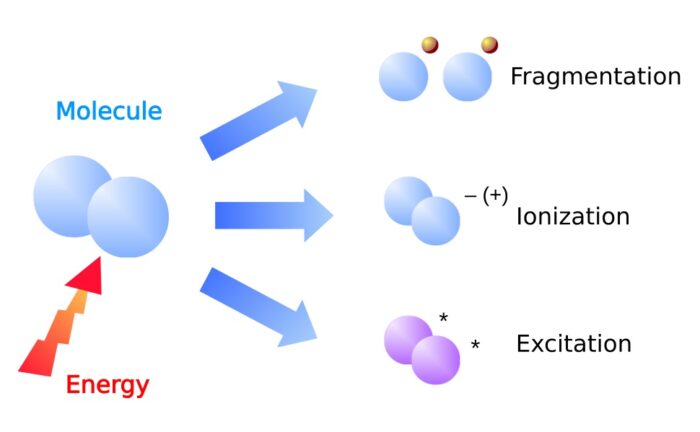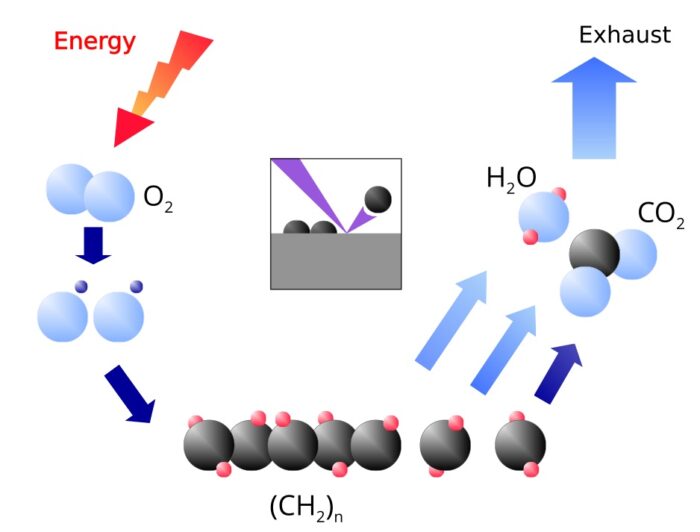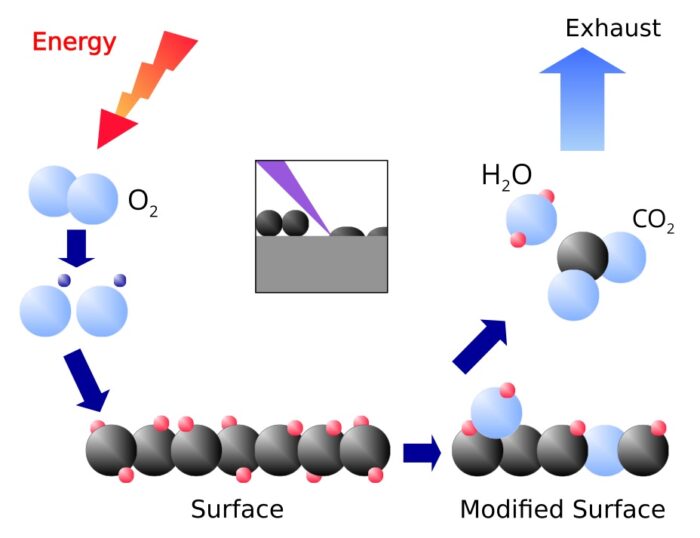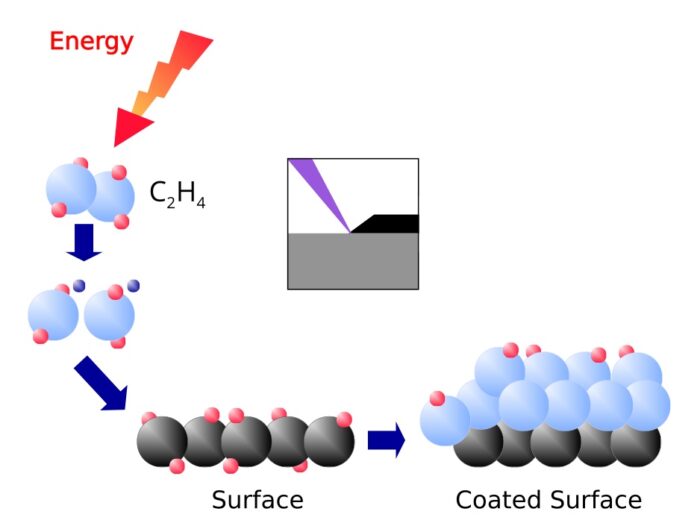Overview
What is a plasma?
The name plasma denominates a partly ionized gas. Plasmas also appear in nature, for example in lightnings. Plasma is also often called »the fourth state of matter« because if energy is applied to a solid it becomes liquid. If more energy is applied it becomes gaseous and eventually it becomes a plasma.
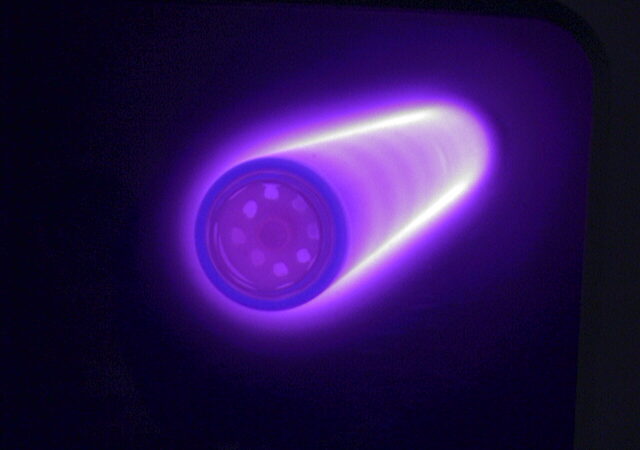

How is a plasma created?
A chamber is filled with a defined volume of gas. The energy to create a plasma is applied by an oscillating electromagnetic field. Depending on the application the oscillation frequency is in the range of MHz, GHz or kHz.
What happens in a plasma?
In a plasma 3 basic effects occur parallel:
- Fragmentation – chemical bonds in the gas molecules are cracked resulting in highly reactive radicals.
- Ionization – electrons are removed from the electron shell of atoms. The resulting free electrons and ions are reactive.
- Excitation – electrons are lifted up to a higher energy level in the electron shell. After a short time they fall back to the original energy level. The released energy is emitted as electromagnetic radiation.

How are plasmas used?
The excitation is for example used in fluorescent lamps.
The ionization and fragmentation can be used for the following applications:
Coating
The radicals and ions of the plasma react with the molecules in the surface. One gets therefore a chemical bond between the surface and the coating. The coating is created by the attachment of further radicals and ions from the plasma.
Plasma is used for the coating techniques PECVD, PEALD and Sputtering.

Adhesion promotion
With a plasma treatment it is possible to achieve an optimal adhesion between two materials at the whole interface. The adhesion is provided by forming chemical covalent bonds at temperatures below 50 °C. Plasma treatments create either reactive coatings on the surface or chemically functional groups and radicals in the surface. This allows to connect metals chemically with plastics as well as plastics with plastics. For more details, see this page.

info@plasma-electronic.de
Contact now







